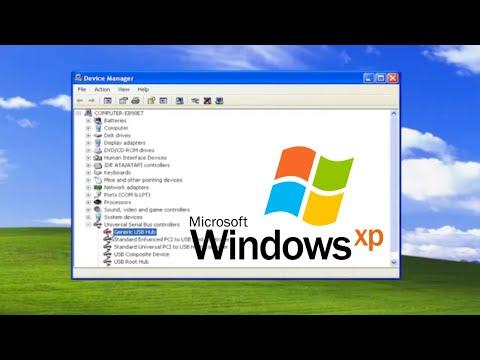Enabling and disabling USB ports in Windows XP might seem like a daunting task at first, especially if you’re not familiar with the operating system’s settings and configuration options. However, with the right steps, it can be a straightforward process. Here’s how I tackled it when I needed to manage USB ports on my own Windows XP machine.When I first encountered the need to enable or disable USB ports, I was primarily concerned with security and control over which devices could be connected to my system. Disabling USB ports can be a practical way to prevent unauthorized access, while enabling them is essential for using peripherals like flash drives and printers. I started by looking into how Windows XP handles these ports and discovered that there are a few methods to manage them.Enabling USB Ports:To enable USB ports on Windows XP, I followed these steps:Check Device Manager: I began by opening the Device Manager, which is the central hub for managing hardware components on my system. To do this, I right-clicked on “My Computer” on the desktop and selected “Properties” from the context menu. This brought up the System Properties window.Access Device Manager: In the System Properties window, I navigated to the “Hardware” tab and clicked on the “Device Manager” button. This action opened the Device Manager where I could see a list of all hardware components installed on my computer.Locate USB Controllers: In the Device Manager, I looked for the section labeled “Universal Serial Bus controllers.” This section lists all the USB controllers and hubs installed on the system. I expanded this section to view the individual USB ports.Check Device Status: I ensured that the USB controllers and hubs were listed without any warning symbols (like a yellow exclamation mark), which would indicate a problem. If the USB controllers were not functioning correctly, I would right-click on each and select “Properties” to troubleshoot the issue.Update Drivers: If the USB ports were not enabled or working correctly, I updated the drivers for the USB controllers. I right-clicked on each USB controller listed, selected “Update Driver,” and followed the on-screen prompts to search for and install any available driver updates. This step often resolved issues related to USB ports not functioning.Enable Ports: If USB ports were disabled through the Device Manager, I would right-click on the disabled USB controller or hub and select “Enable.” This action activated the USB ports, allowing me to connect USB devices.Disabling USB Ports:When it came to disabling USB ports, my approach was similar but with a few additional steps to ensure the ports were fully disabled:Access Device Manager: I followed the same initial steps to open Device Manager from the System Properties window.Locate USB Controllers: Again, I expanded the “Universal Serial Bus controllers” section to view all the USB-related entries.Disable USB Ports: To disable a USB port, I right-clicked on the specific USB controller or hub and selected “Disable.” This action would turn off the selected USB port, preventing any devices from being recognized or used.Confirm Changes: After disabling the USB ports, I checked to ensure that the devices connected to these ports were no longer functioning. If necessary, I repeated the disabling process for other USB controllers or hubs to ensure complete coverage.Use Group Policy Editor (Optional): For more advanced control, I could use the Group Policy Editor to disable USB ports. To access this, I went to “Start,” selected “Run,” typed “gpedit.msc,” and pressed Enter. In the Group Policy Editor, I navigated to “Computer Configuration” > “Administrative Templates” > “System” > “Removable Storage Access.” Here, I could configure policies to deny access to various types of removable storage devices. However, this method is generally more complex and might not be necessary for all users.Additional Considerations:While managing USB ports, I also considered the security implications. Disabling USB ports can be an effective way to protect sensitive data from being copied or accessed by unauthorized devices. However, I needed to balance security with functionality, especially when it came to using USB peripherals like keyboards and mice.I also made sure to document any changes I made, in case I needed to revert them later. Keeping track of which ports were enabled or disabled helped me avoid confusion and ensured that I could quickly troubleshoot any issues that arose.In conclusion, enabling and disabling USB ports in Windows XP requires a basic understanding of the Device Manager and how to manage hardware components. By following these steps, I was able to control the functionality of my USB ports effectively. Whether for security reasons or to troubleshoot hardware issues, managing USB ports is a valuable skill for maintaining the integrity and functionality of a Windows XP system.
How To Enable & Disable USB Port in Windows XP [Tutorial]
